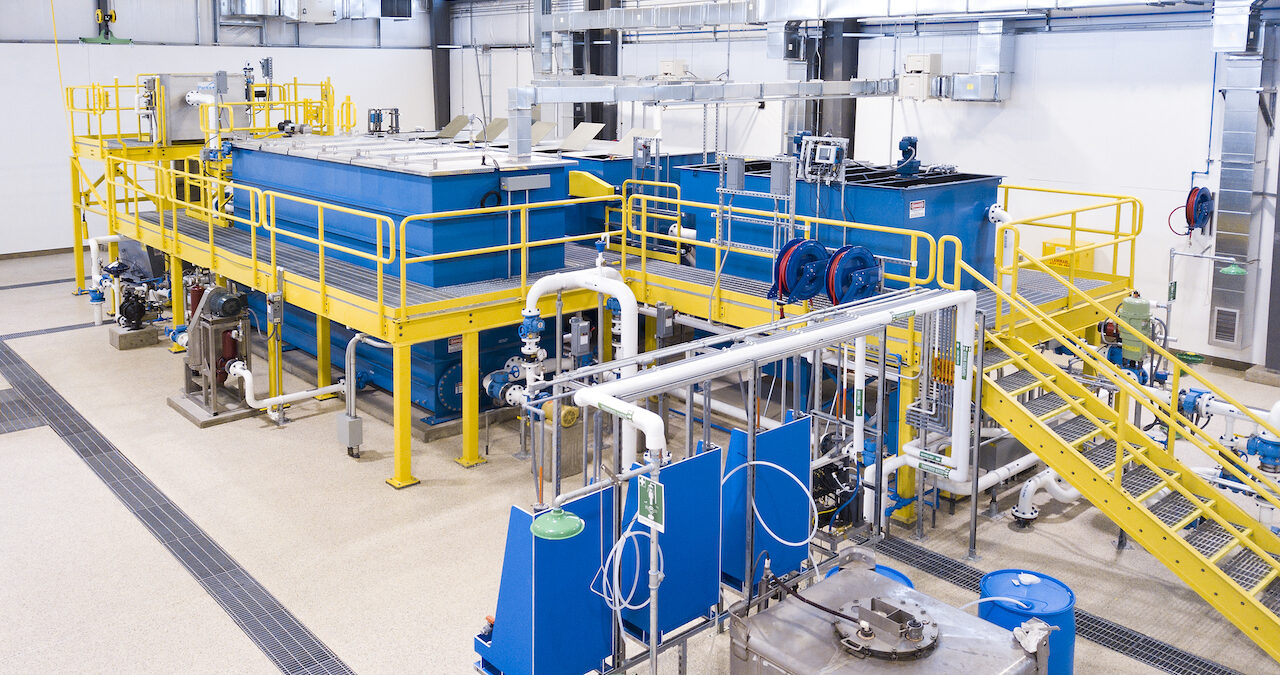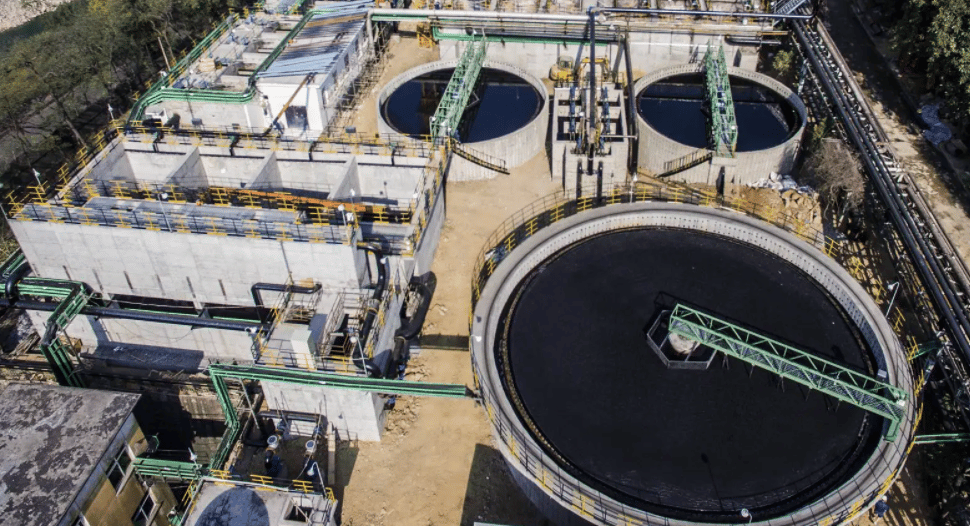Industrial Waste Water Treatment-- Industrial-Grade Water Purification and Purification Solutions
Industrial Waste Water Treatment-- Industrial-Grade Water Purification and Purification Solutions
Blog Article
Obstacles and Solutions in Hazardous Waste Water Treatment
The treatment of industrial wastewater presents a diverse range of obstacles, ranging from stringent governing compliance to the complexities of cost management and technological limitations. The variability in waste structure even more makes complex the efficiency of standard therapy techniques, usually resulting in risen functional expenditures.
Regulatory Compliance Difficulties
Exactly how can industrial facilities navigate the facility landscape of regulatory conformity in wastewater treatment? The regulatory structure governing wastewater monitoring is diverse, often differing by territory and type of market.
To successfully manage these conformity obstacles, facilities ought to carry out robust tracking and reporting systems that ensure real-time information collection and evaluation. Normal audits and risk evaluations can identify prospective conformity gaps, enabling aggressive modifications in therapy procedures. Employee training programs concentrating on governing knowledge and best methods are necessary to promote a culture of compliance within the organization.
Furthermore, engaging with regulatory agencies can provide useful insights and clear up ambiguous laws. Facilities may also take advantage of talking to ecological experts who focus on wastewater therapy conformity, making certain that they stay abreast of developing laws. By taking on these strategies, commercial facilities can not just meet compliance needs however additionally improve their operational efficiency and ecological stewardship.
Expense and Economic Obstacles
Navigating regulatory conformity in wastewater treatment often presents significant financial challenges for commercial facilities. The prices linked with carrying out essential therapy modern technologies, preserving compliance with strict laws, and managing operational expenses can be discouraging. Several organizations deal with high initial capital investment for the building or updating of wastewater treatment plants, which might stress budget plans, particularly for tiny and medium-sized business.
Furthermore, recurring operational costs, including labor, upkeep, and chemical inputs, add to the monetary burden. The unpredictability of fluctuating energy rates and the potential need for added financial investments to fulfill progressing guidelines exacerbate these economic pressures. In many situations, the absence of economic rewards or support from government bodies makes it much more tough for organizations to warrant investments in advanced treatment systems.
In addition, the financial stability of wastewater therapy solutions is often examined, particularly for markets with limited profit margins. It is vital for commercial facilities to discover cost-effective techniques, such as adopting innovative financing options, engaging in collaborations, and leveraging arising technologies that can assist minimize these economic obstacles while making certain compliance with ecological criteria.

Technological Limitations
Various technical restrictions hinder the performance of commercial wastewater therapy processes. One substantial challenge is the inadequacy of existing therapy technologies to deal with intricate impurities. Many conventional techniques, such as activated sludge and chemical rainfall, battle with the elimination of emerging pollutants, including pharmaceuticals and microplastics. This restriction commonly results in the discharge of inadequately treated water, which can have detrimental environmental influences.
In addition, the scalability of treatment innovations presents an obstacle. While some advanced techniques, like membrane layer filtering or sophisticated oxidation, reveal pledge in regulated environments, their application on a larger scale can be prohibitively expensive and technically tough. Maintenance and functional intricacies further complicate the adoption of these systems, particularly for smaller sized industries with minimal technological proficiency.
The assimilation of real-time monitoring technologies also continues to be not enough in lots of treatment facilities. Without efficient tracking systems, operators can not properly assess therapy efficiency or detect possible failures, bring about inconsistent effluent high quality. Attending to these technological restrictions via study and development, along with investment in innovative services, is vital for boosting the efficiency of commercial wastewater treatment and making certain regulative compliance.
Irregularity in Waste Make-up
In the world of industrial wastewater treatment, the variability in waste composition presents a powerful difficulty. Industries create wastewater with diverse qualities, influenced by aspects such as production processes, basic materials, and operational methods. This heterogeneity makes complex the treatment process, as conventional systems usually battle to efficiently deal with the vast array of pollutants existing.
For circumstances, wastewater from food handling might have high degrees of natural matter, while effluents from chemical production can include dangerous substances and hefty metals. This difference requires adaptable therapy techniques to guarantee compliance with check out here environmental regulations and safeguard public health and wellness. Furthermore, variations in waste make-up can happen in time, affected by changes in production schedules, maintenance tasks, or the intro of brand-new products.

Cutting-edge Therapy Solutions
Innovative therapy options are necessary for addressing the complexities of industrial wastewater monitoring. Traditional methods often drop brief in efficiently removing a variety of pollutants, especially in facilities with varied effluent streams. Recent advancements focus on integrating advanced innovations to boost treatment performance and sustainability.
One encouraging method is making use of innovative oxidation procedures (AOPs), which take advantage of powerful oxidants to weaken organic contaminants. AOPs, consisting of photocatalysis and ozonation, can dramatically decrease harmful materials and boost effluent quality. Furthermore, membrane layer bioreactor (MBR) innovation has actually acquired traction, integrating biological therapy with membrane layer filtration, leading to high-quality effluent and minimized impact.
Another ingenious remedy is the implementation of resource recuperation systems. Methods like anaerobic food digestion not only deal with wastewater however additionally generate biogas, which can be taken advantage of as a sustainable energy resource. In addition, the adoption of fabricated intelligence and equipment knowing versions can enhance treatment processes by forecasting variations in wastewater make-up, therefore enhancing operational efficiency.
These innovative remedies not just address regulative compliance yet additionally advertise environmental sustainability, leading the way for a much more resilient and effective industrial community.
Verdict
In conclusion, addressing the challenges of commercial wastewater treatment requires a multifaceted strategy that integrates governing compliance, cost monitoring, and technical advancements. Cutting-edge solutions, such as advanced oxidation processes and membrane bioreactor innovation, deal pathways to improve treatment performance. Real-time surveillance systems and collaborative interaction with governing firms can promote lasting techniques while alleviating financial pressures. A dedication to constant enhancement in treatment approaches will ultimately add to the effective management of industrial wastewater and environmental defense.
The treatment of visit this website industrial wastewater presents a diverse variety of difficulties, ranging from strict regulatory compliance to the details of cost administration and technical restrictions. Industrial Waste Water Treatment.Navigating governing conformity in wastewater treatment frequently offers considerable monetary challenges for industrial facilities. Addressing these technical restrictions via study and development, alongside investment in ingenious remedies, is essential for boosting the effectiveness of commercial wastewater treatment and ensuring regulatory conformity
Wastewater treatment centers need to invest in durable monitoring systems and flexible treatment technologies capable of fitting differing influent qualities.In conclusion, resolving the obstacles of commercial wastewater treatment requires a diverse technique that incorporates regulatory look at this now conformity, expense administration, and technological innovations.
Report this page